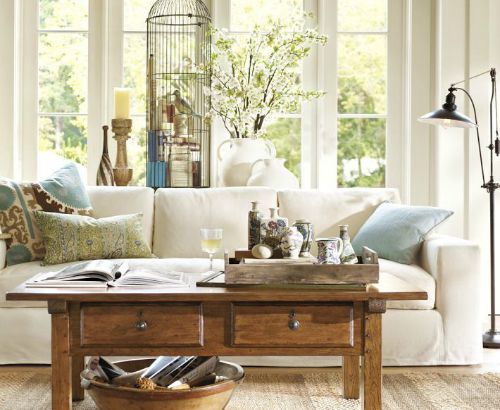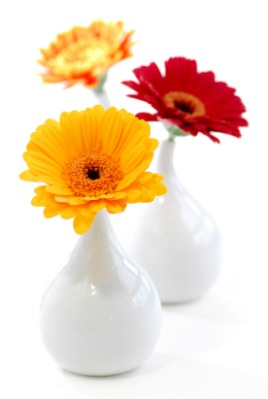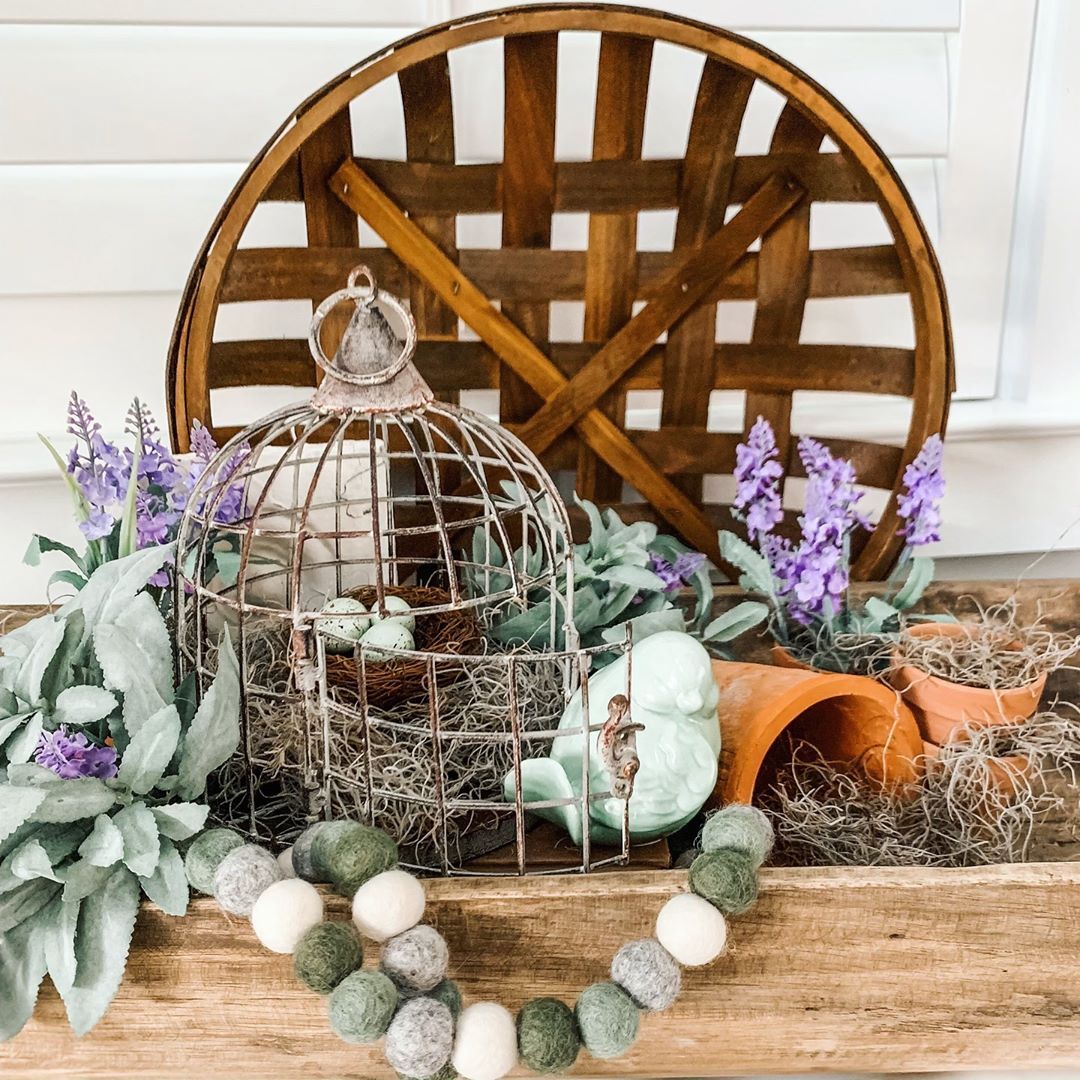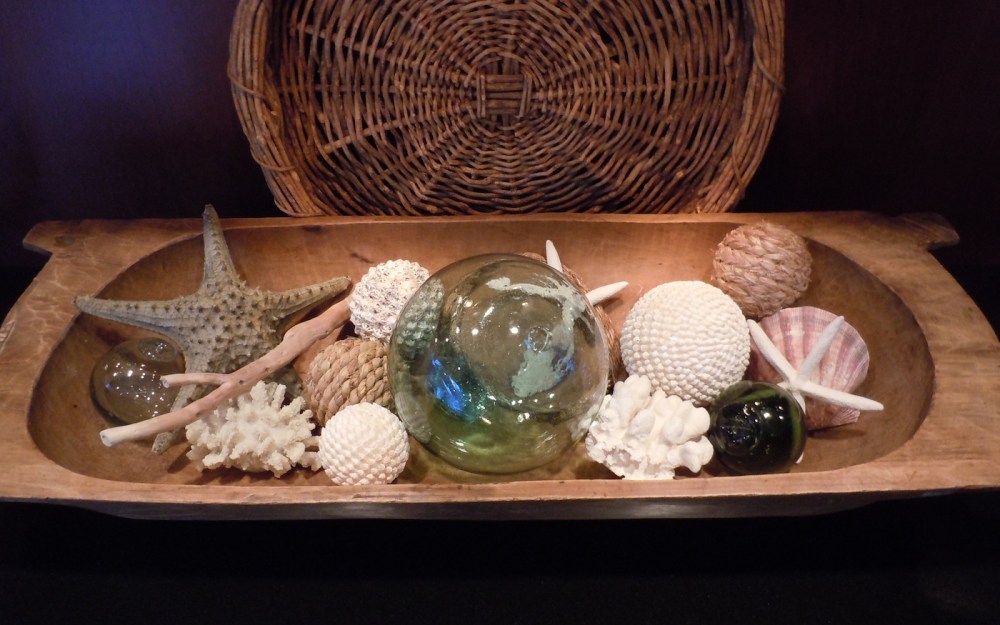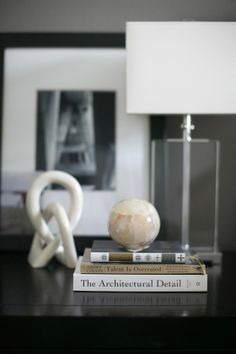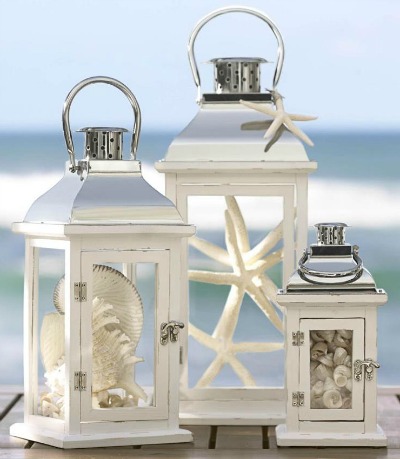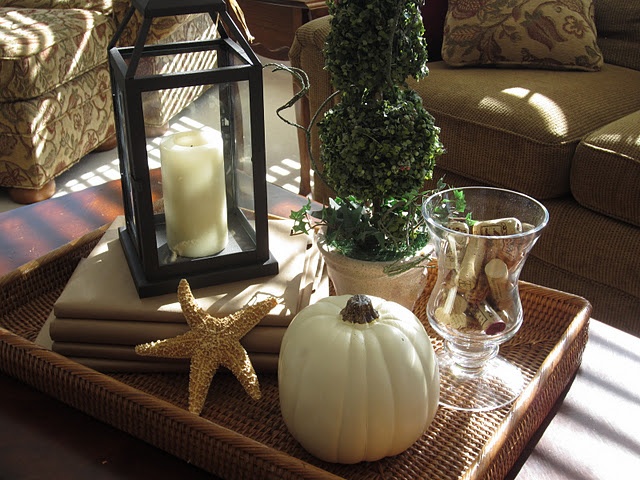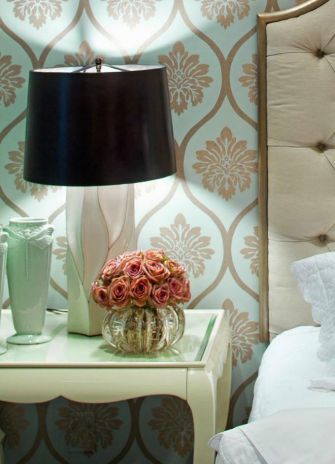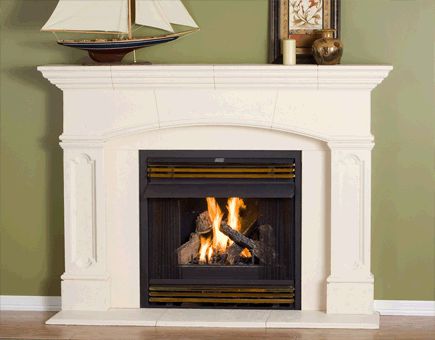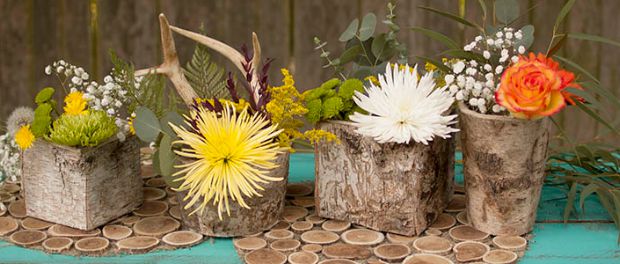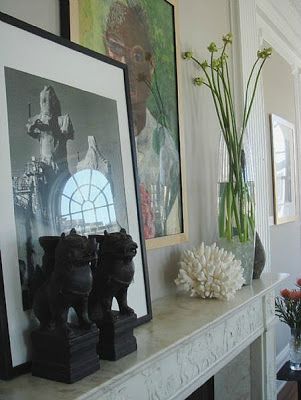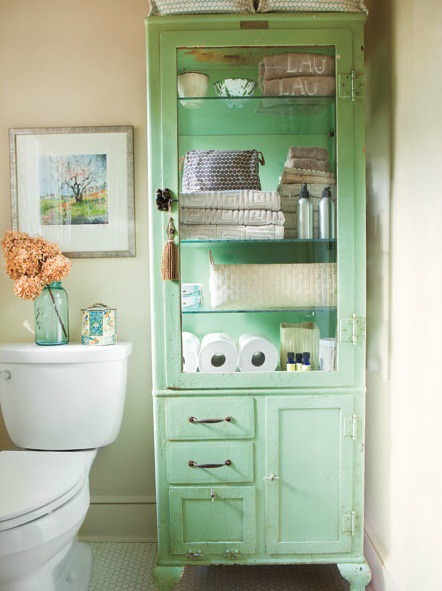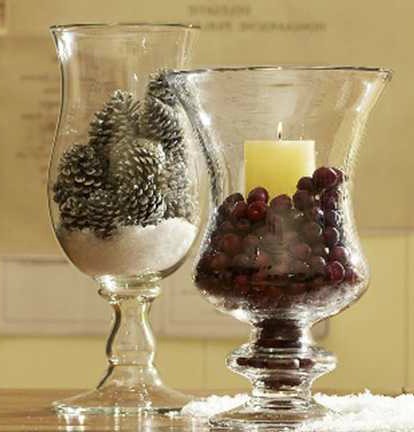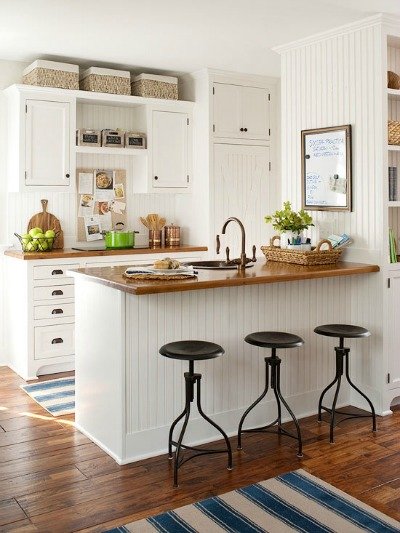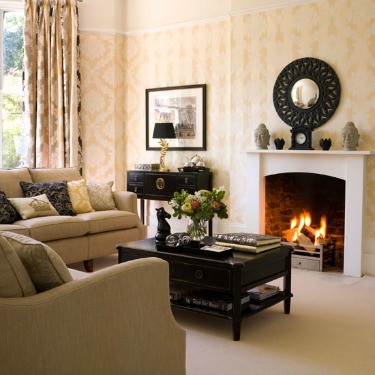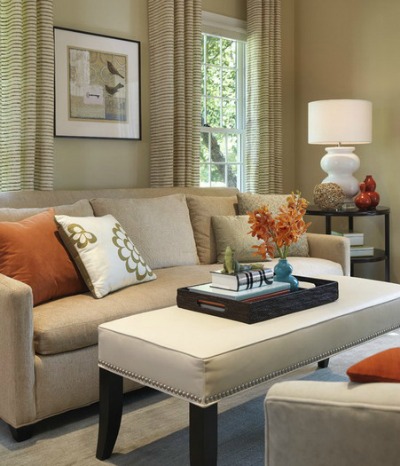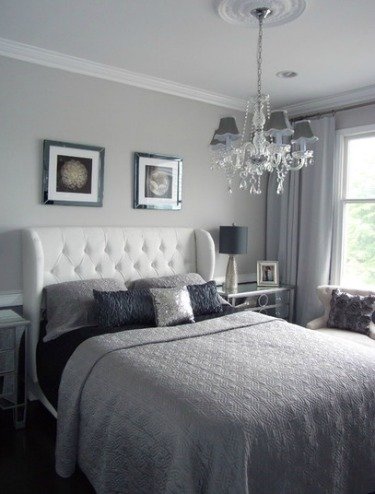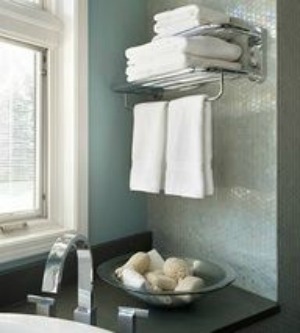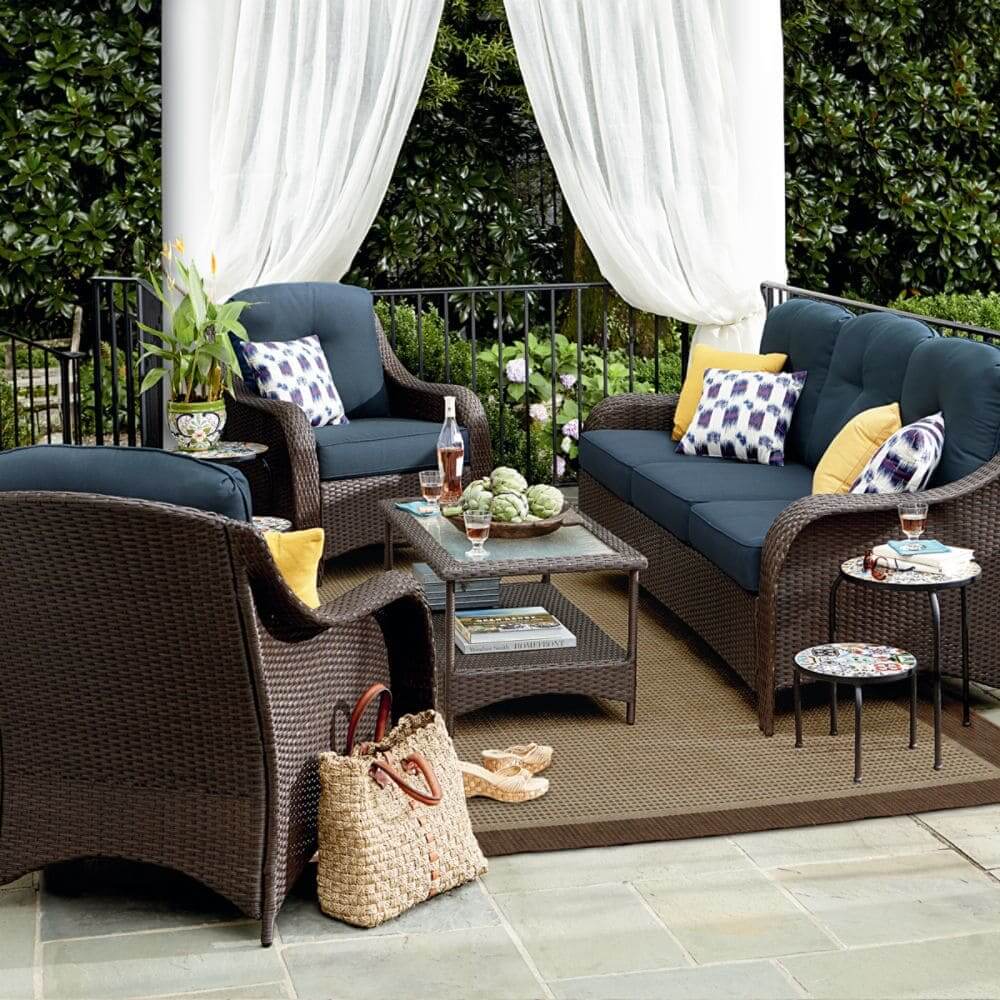How to Make a Vignette like a Pro
For a faster, more profitable home sale
Learn how you can make a vignette that looks professional, beautiful and effortless. It's quite easy once you learn the basic design rules.
Vignettes can be truly personal, informing the world of your tastes and interests. These home decor arrangements can be composed from a variety of objects that have at least one or more things in common, or nothing at all!
What is a Vignette?
Literary Devices.net describes a vignette as "a small impressionistic scene, an illustration, a descriptive passage, a short essay, a fiction or nonfiction work focusing on one particular moment; or giving an impression about an idea, character, setting, mood, aspect or object."
In the realm of interior decorating, a vignette, or “table scape” can be described as an artful arrangement of objects grouped together to create a scene, tell a story, act as a focal point, or simply to make a decorative statement in your home.
A vignette typically consists of a grouping of decorative objects chosen to complement a room's function or decorative details. A vignette should look uncomplicated, spontaneous and unstudied.
If you're trying to sell your house, the addition of a few vignettes here and there throughout your home can be used to highlight a particular feature, create a focal point, or show the function of a room.
Where can I display a vignette?
Vignettes can be displayed on practically any horizontal surface in your home.
You can create a vignette on a coffee table, console, shelf, window ledge, fireplace mantle, an upright piano, bookcase, kitchen or bathroom countertops, a dining table, nightstand, bedroom dresser, coffee table, foyer table and even on the floor!
How to make a vignette look cohesive
- A vignette should complement the style, color or theme of your home.
- Combine objects that have at least one common element.
- If you have a particular theme or style going on in your home, like a beachy cottage or farmhouse, select objects that'll support it.
- Build a vignette around a light source.
- Select one amazing object to be the superstar and build your vignette around that.
- Be sure to move display items close together, even overlapping some objects.
- Vary the heights of objects within the vignette, keeping taller objects in the rear.
Popular vignette themes and ideas
- Shape: Vary the height of objects having the same shape or color.
- Color: Use a color(s) that complements a dominate room color.
- Vintage: Group objects from your favorite vintage period.
- Theme: Beach themes, nature, seasonal, travel, music, art period or specific artist, photography, even a room style theme, like Bohemian.
- Textures: Vary the textures of your vignette components; the juxtaposition of prickly pinecones next to smooth river rocks will certainly liven up your vignette.
- Collections: With any kind of collection, avoid using too many small pieces, because it can look like clutter from a distance.
Sabrina Soto, interior decorator from HGTV, advises not to use any objects “smaller than a grapefruit” when accessorizing. Anything smaller will just look like clutter.
What kind of objects can be used to build a vignette?
Sculptural objects - A lamp, (to add height and light) vase, a weathered ornamental garden sculpture, pottery, metal pieces with a patina.
Items from nature - sea shells, starfish, sea sponges, beach glass, corks, glass balls, geodes, driftwood, coral, fish net, acorns, branches, pinecones, birch back, potted plant, flowers, mossy balls, rocks, antlers, and my favorite, a bird's nest. I like to fill a bird's next with egg shaped rocks.
Place small objects - like a collection of vintage buttons, jewelry or sea shells inside bowls, glass canisters or a clear lamp base.
Paper products - Lean vintage greeting cards, unframed pictures, piano music, black and white photos, elegant restaurant menus, books... Look for vintage paper products in antique and second-hand stores and flea markets.
Antiques and collectibles - Use objects that look old or have a patina; antique binoculars, an old box camera, globe, mason jars, lamp, lantern, basket, candle pedestals, clock, bowl, bottles and wood boxes.
Artwork - paintings, mirrors, framed photographs, picture frames.
Let your vignettes “evolve” by adding or removing objects. Create transitional vignettes with the seasons.
Elevate smaller pieces by using a stack of books, a wood box or candle pedestals.
How to build a vignette
Visualize a triangle, or pyramid-shape as you build your vignette
A triangular-shaped vignette should consist of objects of varying sizes and heights.
Work in odd numbers of threes, fives, etc. Don't be afraid to use only three objects. Simplicity is often best.
Odd numbered arrangements are the most pleasing to the eye, as they appear less studied.
Avoid the temptation of adding too many pieces, because the result can look cluttered. Instead, place smaller items in jars or canisters.
Create depth in your vignette by placing taller objects at the back.
Cluster objects close together to create cohesiveness.
Begin building a vignette with an "anchor piece"
- For the foundation of your vignette, select a shallow basket, crate, mirror, table runner, stack of coffee table sized books or a serving tray as a base. You DON'T NEED a foundation piece, but using one will help unite all the decorative objects into a cohesive unit.
- Select an object to be the “star” of the composition. This anchor piece should be of considerable height or weight and substantial enough to “hold” the arrangement together. Some possibilities: a lamp, lantern, glass vessel that can be filled, pottery, birdhouse, potted plant, flower arrangement, etc.
- Place the anchor piece first and at the peak of the pyramid, (at the rear) and off center.
- Next, fill in the rest of the triangle with objects of varying heights, finishing with the smallest and shortest object at the base and to the front, always keeping in mind the pyramid-shape.
- If your arrangement is on a fireplace mantle, shelf or buffet table, overlap pieces so that a part of each object can be seen. Objects can touch, if desired. If the vignette looks too tight or studied, move objects slightly apart.
For a floor vignette, use large heavy objects, like a floor mirror, shutters or screens. Add live potted plants, sculptural objects, even a stack of old books, making sure they're in proper scale to the size of the room.
How to make a balanced vignette
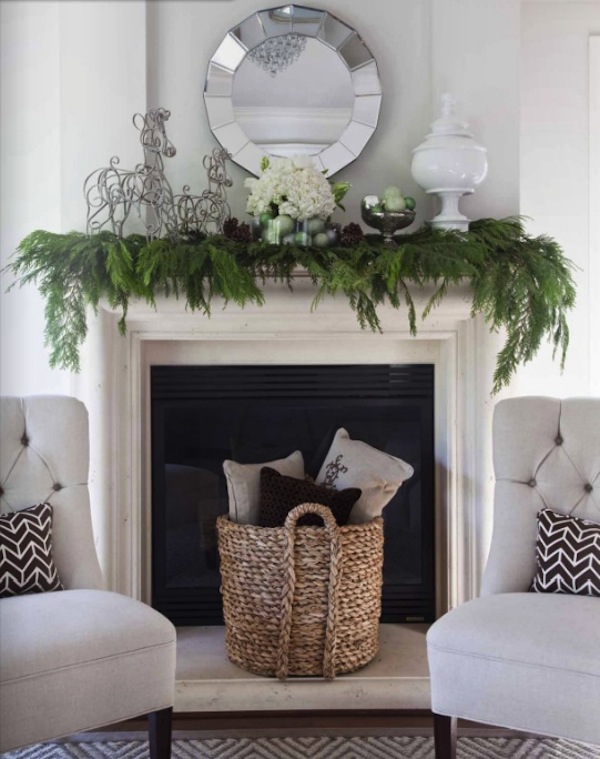 Unmatched items of similar height or color placed at opposite ends of a ledge can create an offset arrangement. Balance with a tall central object. Photo by cottage&vine.
Unmatched items of similar height or color placed at opposite ends of a ledge can create an offset arrangement. Balance with a tall central object. Photo by cottage&vine.Design principals to consider
- Balance: Several objects of similar height or color placed at opposite ends of a fireplace mantle or table can create an offset arrangement. Balance sides with a tall central object, like a mirror or painting.
- Scale: Scale refers to the size of an object in relation to the human body, or to the room itself. Large room, larger objects.
- Proportion: Proportion refers to the size of an object relative to other objects in a room.
- Pattern: Pattern is a decorative element or form that repeats itself. Patterns have a distinct effect on the look and feel of a room. For instance, light floral patterns will lend a room a fresh and open feeling. Large heavy floral or busy patterns can make a room feel stiff and formal.
- Texture: Vary the textures of objects to liven up your vignettes. For instance, shiny, satiny surfaces will illuminate a space. Textures will provide shadow and depth.
- Contrast: Combine various textures to create interesting contrasts in your vignettes, like; place a smooth surfaced vase next to a handwoven rough textured basket.
- Line: The lines of your vignette can give it a feeling of movement and even atmosphere.
- Rhythm: Rhythm is a key design element in successful interior home decor-- it's the path your eye follows when you enter a room or look at a vignette.
Using symmetrical or asymmetrical balance
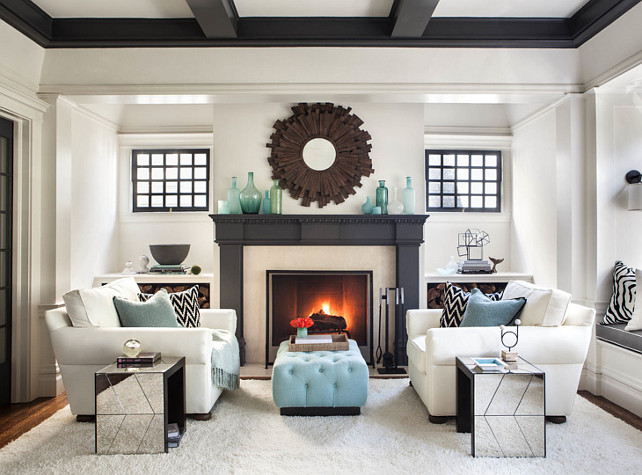 This architecturally symmetrical room almost has a formal air, but for the light colors and casual furniture. Although the mirror is central, the casually arranged bottles and shelf accessories offer a relaxed feel.
This architecturally symmetrical room almost has a formal air, but for the light colors and casual furniture. Although the mirror is central, the casually arranged bottles and shelf accessories offer a relaxed feel.Symmetry - formal balance, is for those who prefer order and formality in their home decorations.
Symmetrical vignettes are quite easy to arrange, as you're simply trying to "match" each side of a shelf or fireplace mantle.
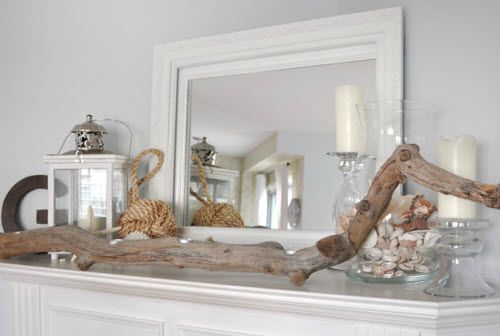 This asymmetrical fireplace mantle arrangement gives off a fun and relaxed vibe.
This asymmetrical fireplace mantle arrangement gives off a fun and relaxed vibe.Asymmetry - informal balance, is for those who prefer excitement, energy and creativity in their home decor.
If you like a casual look, then asymmetry is for you. A properly executed asymmetrical arrangement should look effortless and unstudied, as if the items were just laid down.
Be aware of the “visual weight” of each object in both styles. Objects don’t have to match perfectly to balance, just appear to be of the same weight.
What is "Visual Weight"
Visual weight is about perception; what your eye thinks an object weighs. Below is a simple guideline for building successful vignettes. For more info, go to principle of design.
- Dark colors carry more visual weight than light
- Busy patterns appear heavier than light-colored solids
- Heavy textures are visually heavier than smooth surfaces
Vignette backgrounds
Be aware of the surrounding room décor when building a vignette.
The backdrop will become an integral part of your vignette, so take note of color schemes or wild patterns that may clash with the objects in your display.
Choose objects in colors and shapes that mirror or complement the background of a room.
When building a vignette in front of a hanging picture or mirror, be sure they are hung low enough to become part of the arrangement.
Mirrors make an interesting backdrop to a vignette, bringing added dimension and reflecting your vignette.
Be sure that objects you place in front of the mirror look as good on the backside as they do in the front.
How to decorate a fireplace mantle with a vignette
An easy interior decorating method for building a fireplace mantle vignette, (and other long flat surfaces) is the “three-plus-one” trick.
I use this method to decorate my upright piano, which is always a difficult piece of furniture in any room.
In the picture, the dark color of the picture frame and cluster of objects add enough weight to offset the larger size of the sail boat on the opposite end.
- For this method, select three related decorative objects close to, but not of the same height. Place them on one side of the fireplace mantle. Remember to use the pyramid method when placing these pieces; tallest in the rear, smallest in the front and overlapping. Cluster objects in a pyramid shape, not side by side.
- On the other end of the mantle, place a single large object two to three times the size of the other pieces. It should be "visually" equal in weight to the three pieces on the other end.
What is a tablescape vignette?
A tablescape vignette will typically encompass the center or entire length of a table. Especially popular for holiday tables, they will set the mood and add a festive element to any season.
The size and shape of your table will determine the type of arrangement you need to create. A rectangular table can support a long linear arrangement, (pictured above) whereas a round table will accommodate an arrangement in the center. Be sure the tablescape doesn't block the person sitting across from you.
Go from how to make a vignette like a pro to home page
Updated 10-13-2023
